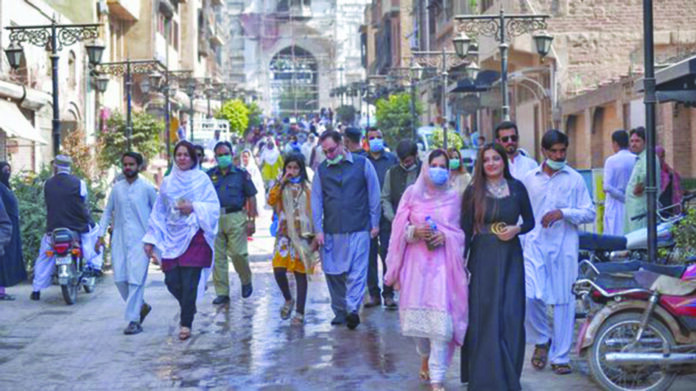In the heart of Pakistan lies a treasure trove of history, a testament to the rich cultural tapestry that has woven itself into the very fabric of the nation. The Walled City of Lahore, a UNESCO World Heritage Site, stands as a majestic symbol of the country’s past, echoing tales of Mughal grandeur and British colonialism. However, its preservation and revitalization owe much to the remarkable efforts of the Walled City of Lahore Authority (WCLA). As we applaud their success, it is crucial to turn our attention towards other walled cities, particularly Peshawar and Multan, and consider emulating the WCLA’s model for safeguarding our shared heritage.
Lahore, with its narrow, labyrinthine streets and ancient architecture, encapsulates the essence of Pakistan’s history. The WCLA’s success in preserving this cultural gem should serve as a guiding light for other cities grappling with the challenge of conserving their own historical quarters. Peshawar and Multan, both boasting rich histories, stand as prime candidates for adopting a similar approach to heritage preservation.
The Walled City of Lahore Authority’s triumph lies in its comprehensive strategy, a holistic blend of conservation, community involvement, and sustainable development. One key aspect of their success is the meticulous restoration of historical structures. By employing skilled craftsmen and adhering to strict conservation standards, the WCLA has managed to breathe new life into dilapidated buildings, ensuring that the architectural marvels of the past continue to stand proudly in the present.
Peshawar, with its ancient Bala Hisar Fort and the mesmerizing Qissa Khwani Bazaar, possesses a heritage equally deserving of preservation. The city, a crossroads of ancient civilizations, holds within its walls the stories of traders, invaders, and scholars. To embark on a journey mirroring Lahore’s success, Peshawar must prioritize the restoration of its historical landmarks, ensuring that the intricate details of its cultural narrative are not lost to the sands of time.
Multan, the ‘City of Saints,’ carries a legacy dating back millennia, witnessed through its ornate shrines and ancient bazaars. The preservation of Multan’s walled city is a responsibility that transcends time; it is a duty to safeguard the roots from which the city has grown. Emulating Lahore’s model, Multan should invest in the preservation of its historical structures, fostering a sense of pride among its citizens and attracting visitors eager to delve into the city’s rich past.
Community involvement has been a cornerstone of the WCLA’s success. Recognizing that the preservation of heritage is a collective responsibility, the authority has actively engaged with the residents of the Walled City of Lahore. Through outreach programs, educational initiatives, and involving local communities in the decision-making process, the WCLA has forged a sense of ownership among the people. This communal bond is vital for the sustained preservation of historical sites.
In Peshawar, fostering community engagement could involve collaborations with local schools, hosting cultural events within the walled city, and encouraging residents to actively participate in preservation efforts. A sense of pride in the city’s history can be cultivated through educational programs that highlight the importance of Peshawar’s heritage, instilling a commitment to its preservation in the hearts of its citizens.
Multan, with its deeply rooted traditions, can draw inspiration from Lahore’s community involvement model. Establishing partnerships with religious and community leaders, organizing cultural festivals, and creating platforms for local artisans to showcase their crafts can instill a sense of shared responsibility for the city’s heritage.
Sustainable development has been another crucial aspect of Lahore’s preservation journey. The WCLA’s approach emphasizes striking a balance between conserving historical authenticity and adapting to the needs of a modern society. This has resulted in the rejuvenation of the walled city, making it a thriving hub for commerce, tourism, and cultural exchange.
Peshawar, as a bustling urban center, can take cues from Lahore’s sustainable development model. Encouraging responsible tourism, promoting local businesses within the walled city, and incorporating eco-friendly practices can ensure that the city’s heritage becomes an asset for its economic growth.
Multan, with its unique blend of spirituality and commerce, can explore sustainable development avenues by creating spaces that accommodate both the needs of the modern world and the preservation of its historical charm. This could involve zoning regulations that encourage the establishment of artisan markets, cultural centers, and boutique hotels within the walled city.
As we celebrate the success of the Walled City of Lahore Authority, we must recognize the urgency of extending this triumph to other historical cities of Pakistan. The preservation of our shared heritage is not only a nod to the past but an investment in the future. Peshawar and Multan, with their own unique stories to tell, can benefit immensely from emulating Lahore’s model of holistic heritage conservation, ensuring that the echoes of their history reverberate for generations to come. The time to act is now, for in preserving our past, we pave the way for a richer, more vibrant future.






















